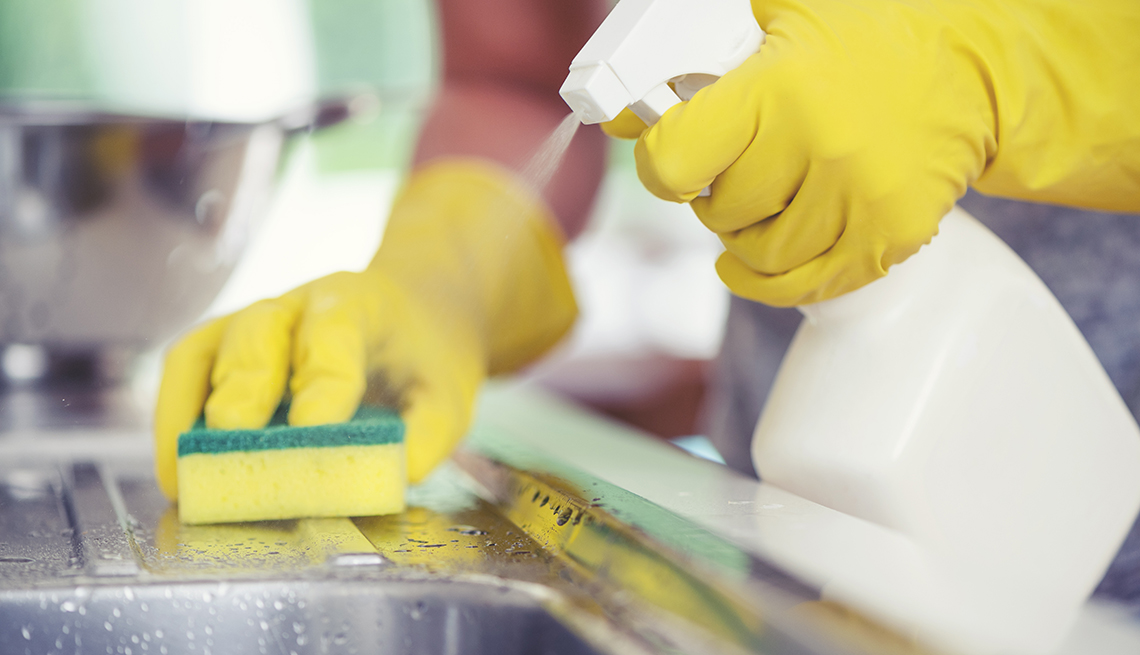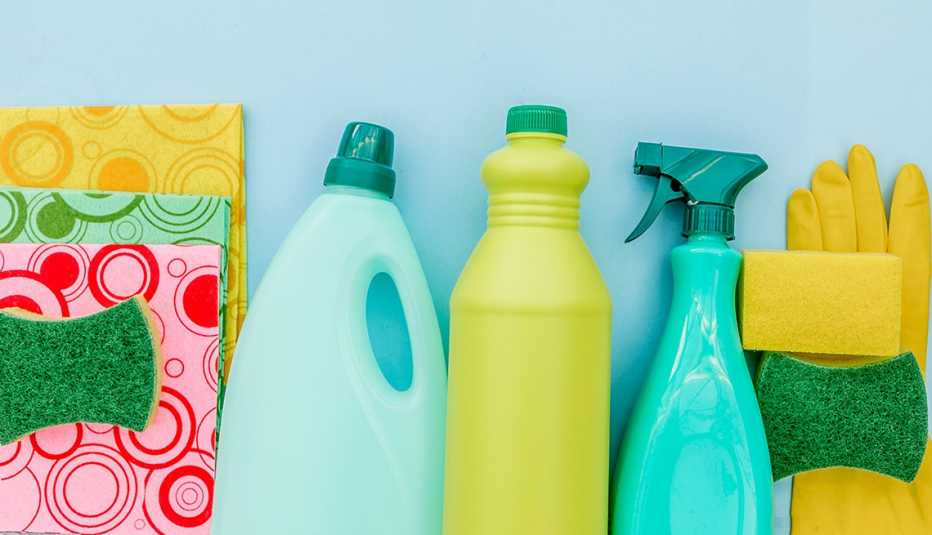AARP Hearing Center
From vacuuming and laundry to scrubbing the bathroom and washing the dishes, the average American spends a lot of time cleaning – more than 23 hours per month, according to one survey. Despite the fact that many people devote so much time to washing and scrubbing, you may be skipping some of the germiest spots in the house — and that can be an invitation for bacteria to take over.
These 10 cleaning tasks each can be tackled in under 10 minutes and will leave your home cleaner than ever.
1. Ceiling fan blades
Dust settles on top of the fan blades where it sits, unnoticed. As soon as you turn on the fan, the spinning blades spread mites and dust all over the room, notes Susan Raschal, a board-certified allergist and immunologist with Family Allergy & Asthma in Chattanooga, Tennessee.
The more dust and allergens on your surfaces, the higher the likelihood you’ll experience symptoms like a stuffed nose, itchy eyes or scratchy throat, she adds.
Skip the feather duster, which will cause dust to fall onto the surfaces below and use a wet cloth or disinfecting wipe to remove dust from the fan blades.
2. Refrigerator crisper
You wash the produce that comes out of the crisper drawer but what about the bin itself? Research found that refrigerators are breeding grounds for bacteria like staphylococcus, E. coli and listeria.
Remove the drawer from the refrigerator and clean it out with soap and water; let it air dry before putting it back in the refrigerator. If food has rotted in the drawer, the Centers for Disease Control and Prevention recommends wiping it out with a combination of equal parts vinegar and water.
3. Cutting board
Wiping down the cutting board isn’t enough to keep bacteria, mold and yeast from raw meat and vegetables from multiplying on its surface.
Pottinger recommends using separate cutting boards for meat and vegetable preparation and washing them after each use. For the best results, skip handwashing and put cutting boards in the dishwasher and choose the “sanitizing” cycle to kill bacteria.
“These cycles have higher heat and longer drying times,” he says. “Even in standard cycles, the water is so hot … and the scrub is so aggressive that it should do the trick.”






































































